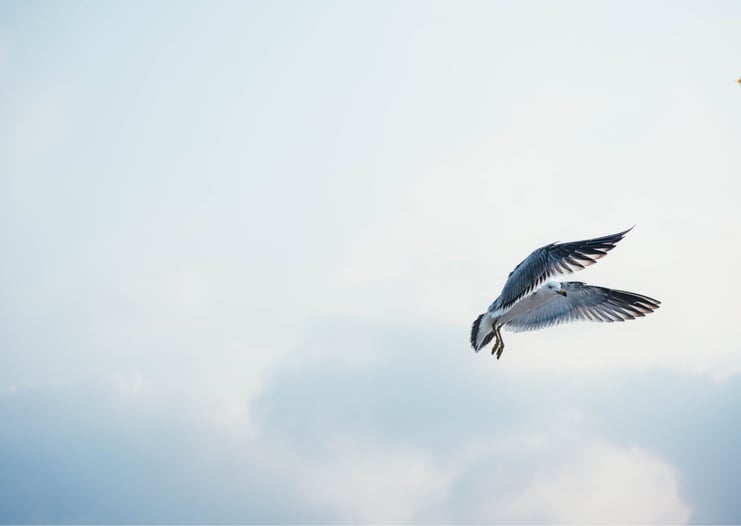Recently, we looked at the ways the coronavirus is increasing drone activity.
But it’s not just drones keeping airports busy during the corona crisis. Bird activity has shifted too.
Note: We originally wrote this article in June 2020. It has been updated in February 2022.
Update: In the first quarter of 2021, the rate of strikes in Europe jumped 205% compared with the same quarter in 2020, according to the European Union Aviation Safety Agency. For the third quarter of last year, the latest period for which data is available, the number of bird strikes was up more than 18% from the same quarter in 2019, at 240.8 strikes per million flights.
Airport executives, safety agencies and wildlife biologists blame quiet airports over the past two years for the rising rate of strikes. Airports handled many fewer flights, and in some cases, smaller fields weren’t used at all for long stretches. Birds moved in, nesting atop parked aircraft, inside engines and on unused gear like passenger bridges and boarding stairs.
Source: Wall Street Journal
In fact, we saw changes in animal behaviour all over the world. Urban areas that wildlife would ordinarily avoid suddenly weren't looking so urban. Lockdown and isolation freed up busy spaces for wildlife to roam; it happened all over the world.
In northern India, a herd of deer were spotted on camera wandering the streets of Haridwar during a national lockdown.
Wild boar have been attracted to the quiet city centre of Barcelona, and in Wales, the local mountain goats caused havoc on the empty streets of Llandudno.
So, it’s not surprising that birds are likely to be making more appearances in freed-up airspace.
Mitigating the threat of bird strikes is an ongoing challenge for airports and airfields all over the world. Aside from posing a severe safety risk, John R. Allen notes an estimated $1.2 billion in damages a year is suffered due to bird strikes.
While aviation sites can never guarantee just how local wildlife and migrating flocks will respond to human infrastructure, wildlife has to be good at adapting to the urban world, and it is. But it is still far from perfect.
With the right measurement tools (hint-hint, our radar) airports can track bird behaviour to establish these kinds of long-term habits and react to risks as they occur in real-time.
Airports like Schiphol are quick off the mark when it comes to bird hazard management, with a policy in place informed by consistent, organised data. Their bird radars provide invaluable insight about habituation and how to efficiently manage wildlife, ensuring the highest standards of aviation safety.
But the corona-curveball has upset a carefully cultivated and monitored symmetry between human infrastructure and wildlife. Animals are adaptable and opportunistic, and now the feathered locals are seeking more access to the fields around the runways at Schiphol, for example.

Flora and fauna in and around Schiphol Airport are intricately monitored and managed to discourage birds from encroaching flight space. A team of Bird Controllers are able to survey, react, and log data in the field, resulting in a remarkably accurate overview of bird activity.
At Schiphol, activity hotspots haven’t seen a huge difference, due to the continuous efforts of Schiphol's bird controllers, and the current breeding season must also be taken into account; however, bird movement has shifted.
And while we may be tempted to think airports must be seeing lots more birds right now, it’s also likely that changes in bird-behaviour due to the present situation will pose a higher risk; not necessarily increased numbers alone.
With wildlife running, well, 'wild', it’s never been more important to have a complete awareness of what’s going on in and around airspace at all times. Flights are still operating. Airlines are still taking bookings, private jets and freight still coming and going.
The level of insight afforded by our bird detection radar systems mean that airports like Schiphol can prepare in the best way to take on and mitigate evolved threats, like this one, in these strange and unprecedented times.
Interested in how it all works?
Read more about how our avian radars are deployed at airports like yours.